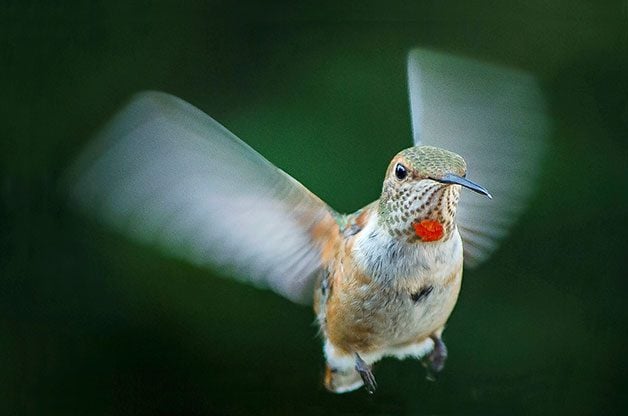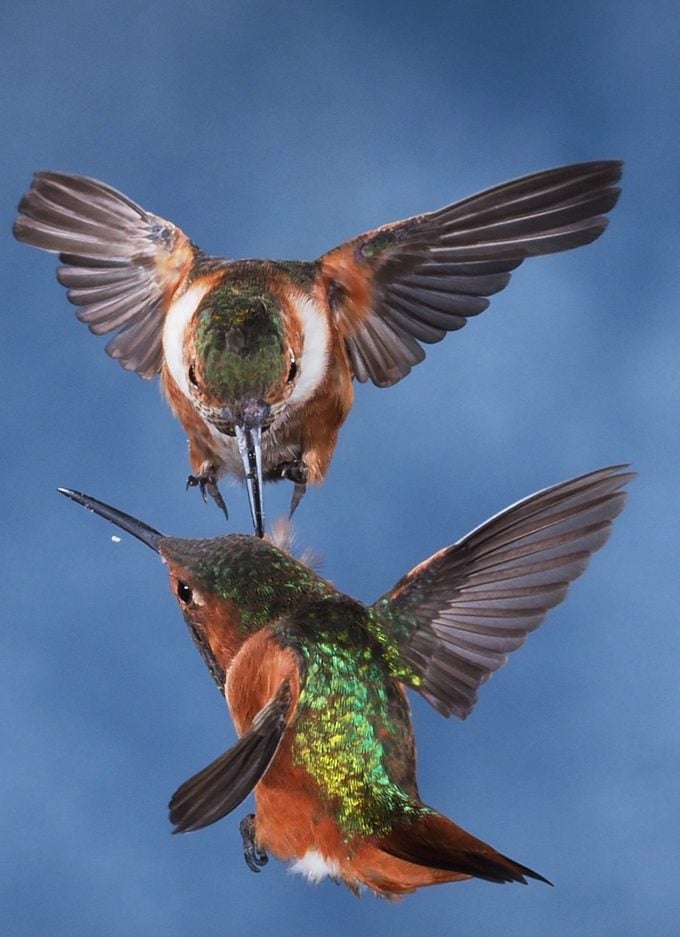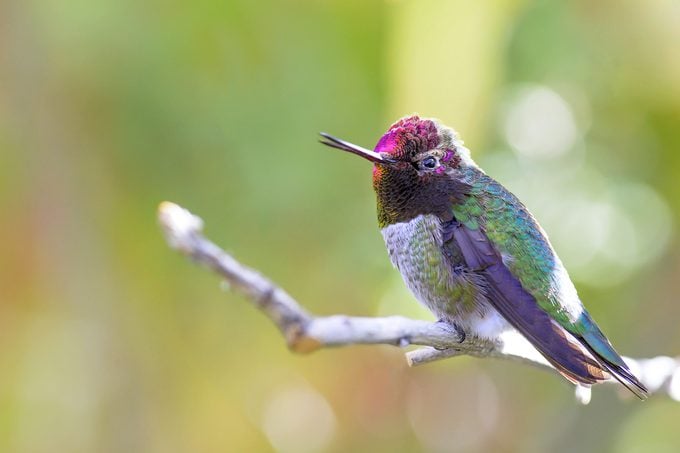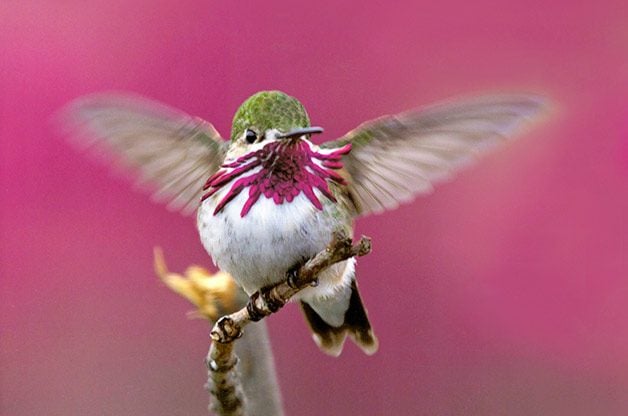Hummingbird Sounds: Do Hummingbirds Sing?
Updated: Dec. 05, 2023
Listen carefully to hear calls or singing the next time you see a hummingbird. Learn all about the variety of hummingbird sounds.
Question: Why does a hummingbird hum? Answer: Because it can’t remember the words! OK, that’s a pretty bad joke, but it addresses an interesting point. The humming for which hummingbirds are named isn’t a vocal sound, but one created by the rapid beating of their wings. This isn’t the only sound hummingbirds make. Let’s take a look at other hummingbird sounds you might hear, including hummingbird calls and songs.
On This Page
Regular Hummingbird Calls

All hummingbirds make short, soft call notes. These are often useful for identifying species. In the West, for example, the soft teew of a black-chinned hummingbird is very different from the musical chip of a rufous hummingbird or the thin tic of a Costa’s hummingbird.
Hear how a rufous hummingbird sounds.
Bird songs provided by the Cornell Lab of Ornithology.
Aggressive Hummingbird Calls

Hummingbirds are amazingly feisty creatures, constantly sparring over choice flower patches and feeders. Their aerial battles are mostly just bluffing, but they pump up the effect with all kinds of chattering, squealing noises. When a large number of hummingbirds gather, most of the sounds that you hear will be these aggressive calls.
Hummingbird male vs female: Find out how to tell the difference.
Do Hummingbirds Sing?

Yes, some hummingbirds do sing! The champion singer among North American hummers is the male Anna’s hummingbird, which is very common along the Pacific Coast. He will sit on a high perch and sing for minutes at a time, a scratchy series of notes punctuated by a loud tzzip, tzzip! The bird pictured above is singing, but as you can see, it doesn’t open its mouth very wide.
In the desert Southwest, the male Costa’s hummingbird also sings, but with a thin, piercing whistle, instead.
Although many kinds of tropical hummingbirds have noteworthy songs, most of those in North America aren’t as accomplished as the Anna’s or Costa’s hummers. For example, what passes for song from the male ruby-throated hummingbird is just a monotonous series of calls, given mostly at dawn.
Listen to the Anna’s hummingbird song.
Where do hummingbirds sleep at night?
Hummingbird Wing and Tail Sounds

Many hummingbird sounds are produced by the feathers of the wings or tail vibrating against the air. The male broad-tailed hummingbird of the Rocky Mountain region has an especially impressive sound. You can always tell when an adult male broad-tail flies past, because of the high, metallic trilling of his wings.
Although the male ruby-throat’s wing sounds are not as obvious, the pointed outer feathers of his wings create a high-pitched whine during his flight displays, while shorter inner feathers make a rattling sound when he changes directions.
Listen to the sounds of a ruby-throated hummingbird.
The male Anna’s hummingbird is famous for his song, but he also produces a remarkable sound with his tail feathers. His courtship display includes a zooming dive, in which he plummets toward the ground and then pulls up with a loud, explosive pop that can be heard from hundreds of yards away.
Scientists used to debate whether this was a vocal sound, but studies have shown that it’s the outer tail feathers vibrating at the bottom of the dive making the noise.
Listen carefully the next time you see a hummingbird. Not only will you hear that familiar hum of the wings, but you could also hear these other fun hummingbird sounds.
Next, learn how fast a hummingbird’s heart beats.
